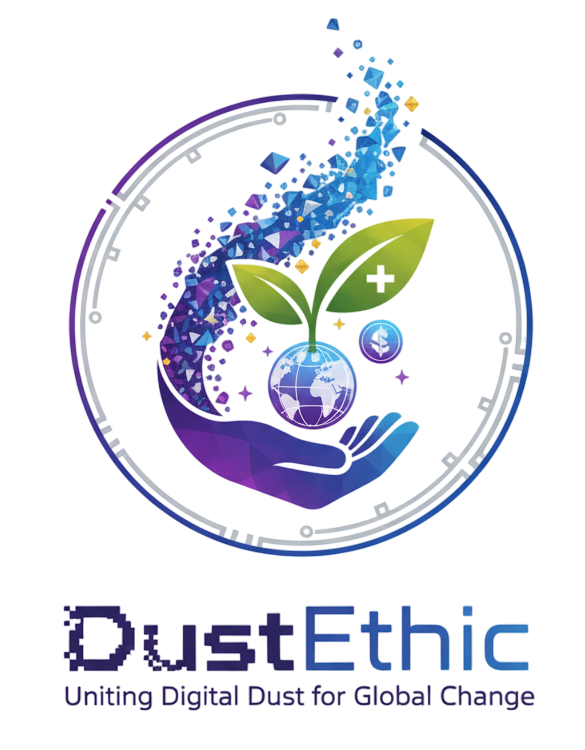DustEthic Standard (v1.1 – draft)
- Commission and fees are displayed as a percentage of the donated crypto.
- Formula: NGO net = NGO net = Aggregated amount – reimbursed gas – relayer fee – technical reserve.
How it works
-
- Donors give in crypto, not in fiat.
- A DustEthic relayer aggregates micro-donations over a limited period.
- When the ratio Aggregated donations / estimated gas is high enough (T ≥ 30 recommended), the relayer sends one grouped payout to the NGO.
- The standard formula is public: NGO net = Aggregated amount – reimbursed gas – relayer fee – technical reserve
- The fee is degressive and always shown as a % of the donated crypto (e.g. 7% in ETH if the donation is in ETH).
- A campaign cap (e.g. 15%) guarantees that gas + fee + technical reserve stay below a clear threshold.
Gas policy (v0.2, summary)
-
- L2-first: focus on low-fee L2s (Optimism, Arbitrum, etc.).
- Conditional execution: grouped payout only when Aggregated donations / estimated gas ≥ T (T ≥ 30 by default).
- Relayer gas pool: gas is paid from a dedicated pool, without converting donations.
- Optional safety net: minimal, on-chain documented conversion if the gas pool is insufficient.
Who is it for?
-
- Donors: give small crypto amounts without seeing them eaten by fees.
- NGOs: receive aggregated, traceable amounts directly in crypto (then convert according to internal policy).
- Relayers / wallets: offer a clear, open and documented micro-donation experience.
Standard Actors
1. 🙋The Donors
Choose a cause or wish to support, without creating an account, with an experience designed to minimise, and whenever possible avoid, any fees on the donor side, send their dusts from their own wallets, and obtain a verifiable statement.
2. 🧑💻The Relayers
Adopt the standard, aggregate micro-donations, support sending to NGOs, and publish the technical logs necessary for audit. They become: “Relayers compliant with the DustEthic Standard.”
3. 🏥The NGOs
Register directly with one or more certified relayers. Receive donations net of public and capped fees directly to their official addresses and publish public receipts.
A self-financed and transparent model
To ensure long-term sustainability, the standard introduces an automatic micro-retention on collected dusts:
- a fraction covers network fees (gas, bridge, etc.),
- another fairly compensates the relayer,
- and, when needed, a symbolic portion funds NGO verification or registration.
All rates are public, capped, and defined by the DustEthic Standard.
Standard Actors
NGOs
Receive net, traceable donations, without third-party custody.
- 🔎Public traceability of received amounts
- 🔒Direct reception, without custody
- ⚖️Capped and documented fees
Relayers
Operate non-custodially with transparency and public rate schedules.
- 🔎Signed logs (CSV/JSON) and on-chain links
- 🔒Documented non-custodial architecture
- ⚖️Automatically applied caps/limits
Donors
Verifiable donation, without entrusting their keys, with announced fees
- 🔎Verifiable statement: amount, date, recipient, hash
- 🔒No key transfer nor third-party custody
- ⚖️Detail of fees and relayer share before sending
💡 Explore how these concepts evolved from our early ideas to explore.
“DustEthic doesn’t collect donations.
It defines the rules so that every actor – donor, NGO, and relayer – receives their fair share.”
